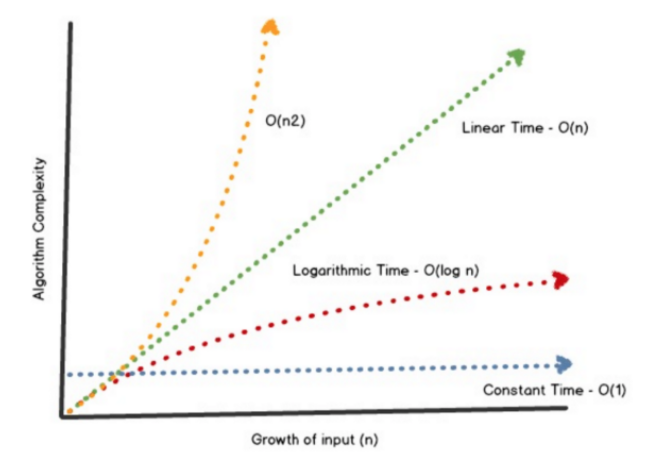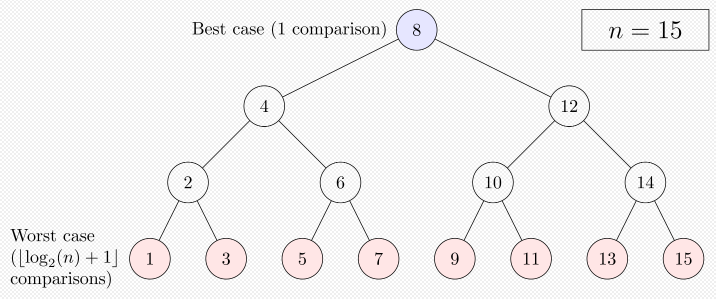Big o notation
General
Big O notation is a mathematical notation that describes the limiting behavior of a function when the argument tends towards a particular value or infinity. This graph tries to convey how the performance of an algorithm is impacted based on the O(n) value. Other references are Big_o_notation and [here]
 They talk about approaches used.
They talk about approaches used.
- Experimental
- Theoretical
Experimental
Experimental analysis involves running a program and measuring how long it takes to complete. The problem with this approach is that programs run non-deterministically and at different speeds depending on the hardware, compiler, programming language, and other factors.
Theoretical
The alternative is theoretical analysis. One approach to theoretical analysis is to approximate the running time by counting the number of steps an algorithm takes for a given input.
O(1)
O(1) describes an algorithm that will always execute in the same time (or space) regardless of the size of the input data set.
bool IsFirstElementNull(IList<string> elements)
{
return elements[0] == null;
}
O(N)
O(N) describes an algorithm whose performance will grow linearly and in direct proportion to the size of the input data set. The example below also demonstrates how Big O favours the worst-case performance scenario; a matching string could be found during any iteration of the for loop and the function would return early, but Big O notation will always assume the upper limit where the algorithm will perform the maximum number of iterations
bool ContainsValue(IList<string> elements, string value)
{
foreach (var element in elements)
{
if (element == value) return true;
}
return false;
}
O(N2)
O(N2) represents an algorithm whose performance is directly proportional to the square of the size of the input data set. This is common with algorithms that involve nested iterations over the data set. Deeper nested iterations will result in O(N3), O(N4) etc.
bool ContainsDuplicates(IList<string> elements)
{
for (var outer = 0; outer < elements.Count; outer++)
{
for (var inner = 0; inner < elements.Count; inner++)
{
// Don't compare with self
if (outer == inner) continue;
if (elements[outer] == elements[inner]) return true;
}
}
return false;
}
O(log N) Binary Search
Binary search is a technique used to search sorted data sets. It works by selecting the middle element of the data set, essentially the median, and compares it against a target value. If the values match it will return success. If the target value is higher than the value of the probe element it will take the upper half of the data set and perform the same operation against it. Likewise, if the target value is lower than the value of the probe element it will perform the operation against the lower half. It will continue to halve the data set with each iteration until the value has been found or until it can no longer split the data set.
The iterative halving of data sets described in the binary search example produces a growth curve that peaks at the beginning and slowly flattens out as the size of the data sets increase e.g. an input data set containing 10 items takes one second to complete, a data set containing 100 items takes two seconds, and a data set containing 1000 items will take three seconds. Doubling the size of the input data set has little effect on its growth as after a single iteration of the algorithm the data set will be halved and therefore on a par with an input data set half the size. This makes algorithms like binary search extremely efficient when dealing with large data sets.
O Performance
Performance of these algorithms can be shown by the graph below

